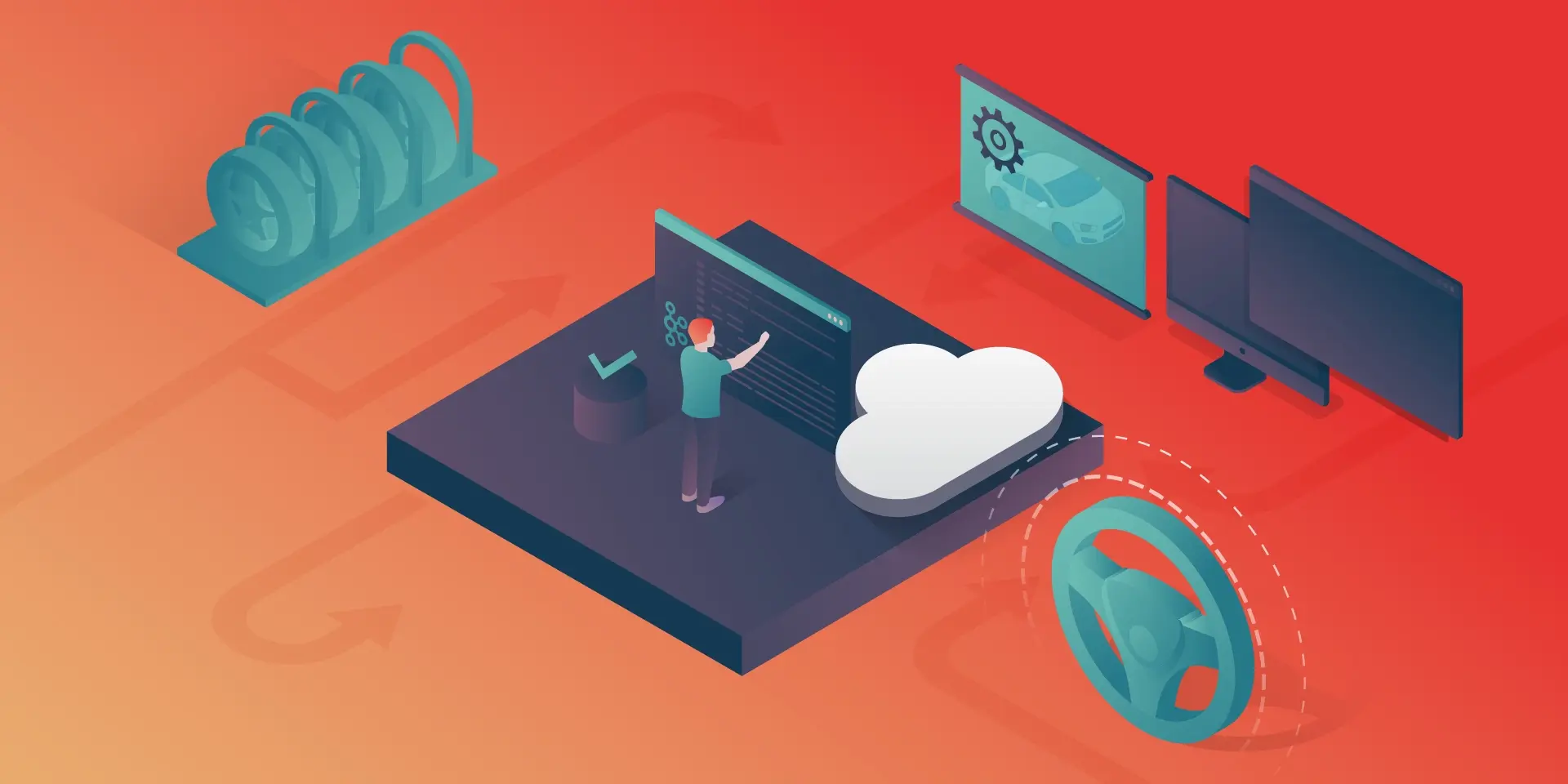Vehicle Data Platform: How to Connect OEMs and Third-Party Service Providers

As the automotive industry continues to evolve, the demand for connectivity and data-driven solutions is on the rise. A vehicle data platform serves as a crucial link between Original Equipment Manufacturers and Third-Party Service Providers, granting access to real-time information on cars’ performance, drivers’ behavior, and other valuable insights. In this article, we will answer the question of how to use vehicle data platforms in order to improve customer experience.
Why do OEMs use TPSPs instead of creating their own applications?
Until recently, car manufacturers designed their own applications and services to enrich the driver’s experience. Today, however, OEMs are increasingly being replaced by companies and programmers not directly related to the automotive industry. These parties follow their own business goals and build independent databases.
The relationship between TPSPs and OEMs resembles a kind of symbiosis. The former gain access to valuable data on cars’ performance and drivers’ behavior, which allows them to design and sell innovative solutions for the automotive industry. The latter, on the other hand, receive ready-made products, thanks to which they can constantly improve their customers’ experience.
It is worth considering, however, why OEMs gave up producing their own applications in favor of third-party services:
- Expertise — TPSPs are often specialized in a particular area, such as telematics, fleet management, or connected car services. By working with TPSPs, OEMs can leverage their expertise and access to cutting-edge technologies without having to develop them in-house.
- Time to market — developing a new application from scratch can be time-consuming and costly. By working with TPSPs, OEMs can reduce development time and get their products to market faster.
- Cost — building and maintaining an application requires significant investment in resources, including development, infrastructure, and ongoing management. Working with TPSPs can be more cost-effective, as OEMs can pay for the services they need on a subscription or per-use basis.
- Flexibility — OEMs can choose from a range of third-party services to meet customers’ specific needs without being tied to a single solution. This provides the ability to adapt to changing market conditions.
- Scalability — as the number of connected vehicles and the amount of data they generate continue to grow, OEMs may struggle to scale their own applications to handle the volume. TPSPs, on the other hand, often have the infrastructure and resources to meet the market’s demand.
How can OEMs improve customer experience with third-party services?
Access to third-party services gives OEMs great opportunities to improve their offerings. By providing detailed data on how cars are used and benefiting from the solutions produced on this basis, you can respond to the needs of today’s consumers more and more precisely.
The most important benefits that you can offer your clients thanks to TPSPs include the following benefits:
- Increased convenience — by integrating third-party services into their products, OEMs can provide a more convenient and streamlined experience for their customers. As a car manufacturer, you can, for example, include a parking app in your infotainment system, allowing your clients to easily find and reserve parking spots.
- Enhanced value — third-party services can add value to the OEM’s products by providing additional features and capabilities that customers may find useful. For example, as an automotive manufacturer, you can partner with a music streaming service to offer a personalized music experience through the car’s infotainment system.
- Differentiation — OEMs can differentiate their products from competitors by offering unique third-party services. You could, for example, partner with a food delivery service to offer on-the-go meal options for drivers.
- New revenue streams — third-party services can bring you more income. For example, you could partner with a car-sharing service and earn a commission for every rental.
Overall, by integrating third-party services into your products, you can provide a more convenient, valuable, and personalized experience for your customers while generating new revenue streams.
Car data platforms — an easy way to connect with TPSPs
Cooperation between OEMs and TPSPs may turn out to be very fruitful for both parties. For this purpose, however, a common platform will be necessary. It will allow them to exchange crucial information. This is how vehicle data platforms work.
Car data platforms are digital tools that collect, store, and analyze data generated by vehicles. These services use a combination of hardware and software to capture information from various sensors and systems in the car, such as the engine, transmission, brakes, and infotainment system. The data is then transmitted to the platform through a variety of methods, such as cellular or Wi-Fi connections.
Once the data is collected, it is processed and analyzed using algorithms and machine learning models to extract valuable insights. This can include identifying patterns in driver behavior, predicting maintenance needs, optimizing vehicle performance, and more.
Vehicle data platforms often provide APIs (application programming interfaces) that allow third-party developers to build advanced applications and services. For example, a fleet management company could use the information to optimize routes and reduce fuel consumption, while an insurance company could offer personalized policies based on driving behavior.
The resulting third-party services are evaluated and approved for use by the platforms. As a car manufacturer, you have convenient access to these products, while the marketplaces protect your interests and help you negotiate individual contracts. Every financial transaction goes through the platform, which translates into safety and transparency.
How to build and use a vehicle data platform
Now that you know how car data platforms work, it is worth considering how to make good use of them. You have at your disposal marketplaces already functioning on the market, but nothing stands in the way of creating your own platform. As the automotive company owner or manager, you should take the following steps:
- Identify the purpose and goals — first, you need to identify what kind of data you want to collect and analyze, and what insights you hope to gain from it. You should also determine what products you are interested in and what features you plan to offer to your customers.
- Choose the data sources — these can include vehicle sensors, telematics devices, GPS systems, and other sources of data.
- Connect your vehicles — develop and integrate the necessary hardware and software to connect your vehicles to the platform. This includes selecting the appropriate communication technologies, sensors, and data management systems.
- Store and manage data — you need to find a solution to handle large volumes of data. Depending on the amount of information you are collecting, you may want to use cloud-based solutions, such as Amazon Web Services or Microsoft Azure.
- Develop analytics and visualization capabilities — once you have the data, you need to analyze it and derive insights. You should develop analytics and visualization technologies to help users make sense of the collected information.
- Define APIs — set application programming interfaces that enable Third-Party Service Providers to access the data generated by your vehicles. Ensure that these APIs are well-documented and easy to use.
- Partner with TPSPs — find and team up with entities that can provide a range of value-added services to your customers. This includes services such as predictive maintenance, telematics, and infotainment.
- Ensure security and compliance — you need to ensure that your vehicle data platform is safe and compliant with applicable laws and regulations. This translates into protecting data privacy and ensuring its accuracy.
- Test and iterate — you need to verify if the platform meets the needs of your users. You should gather feedback and use it to improve the platform over time.
- Monetize your data — identify opportunities to generate income by selling data to third-party service providers or using it to create new revenue streams.
Remember that creating a vehicle data platform requires a team of skilled professionals with expertise in different areas. You should partner up with an experienced software house or automotive engineering company to get the help you need.
Vehicle data platform — summary
Using car data platforms and gaining access to third-party services can bring you numerous benefits in the form of customer satisfaction, increased sales, optimized costs or improved business flexibility. It is up to you exactly what facilities you will offer and how you will monetize the collected information. One thing is certain — to start benefiting from connectivity and data-driven solutions, you need to begin by creating a functional car data marketplace.
Check related articles
Read our blog and stay informed about the industry's latest trends and solutions.
see all articles

In-Car Infotainment: How to Build Long-Term Relationships and Unlock New Revenue Streams
Read the article





